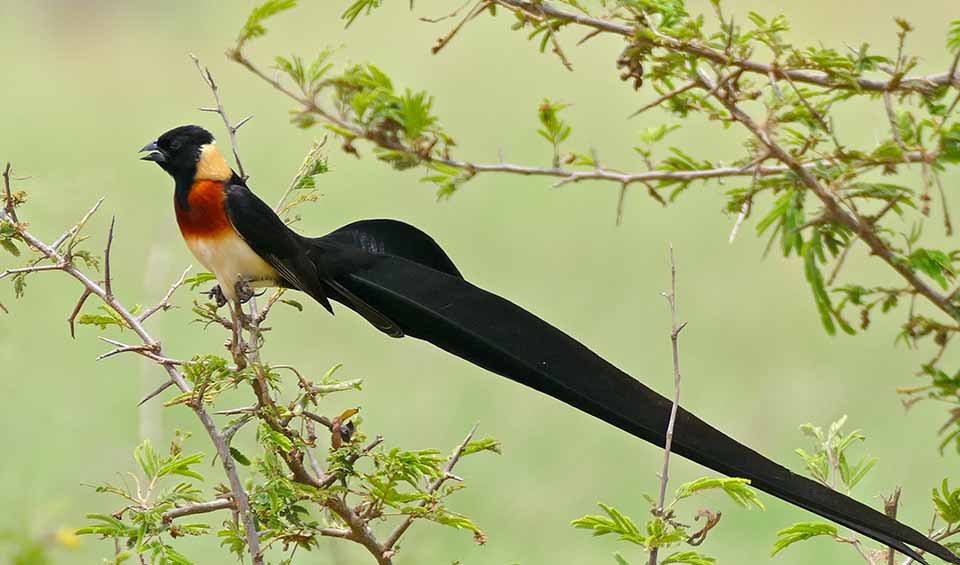Vidua
If a male doesn’t perfectly mimic the host bird’s song, females won't mate with him
These birds are famous for their sneaky reproduction strategy — brood parasitism — and for the striking, dramatic appearance of the males during the breeding season. The genus name Vidua means “widow” in Latin, referencing the long, flowing black tail feathers of some male whydahs, which look like mourning veils trailing behind them in flight.
There are about 19 species within Vidua, divided mainly into the indigobirds and the whydahs. The indigobirds are usually stocky and dark, appearing glossy black, blue, or green under sunlight. The whydahs, however, take the spotlight with their outrageous tail feathers. Species like the pin-tailed whydah, long-tailed paradise whydah, and shaft-tailed whydah have males that grow enormous, flowing tail streamers during the breeding season, often longer than their own bodies. These tails are crucial for courtship displays, where males perform slow, fluttering dances in the air to impress females.
One of the most extraordinary things about Vidua species is their complex mimicry. Each species targets a specific host, typically a waxbill or firefinch, and imitates the host’s songs and chick calls. Males copy the calls and songs of the bird species they were raised by, helping to attract the correct females, who also imprint on that host species as chicks. This system ensures that each Vidua species sticks closely to its traditional host and has likely led to the rapid diversification of the genus.
While many brood parasites are brutal — like cuckoos that eject host chicks — Vidua chicks are relatively polite parasites. They do not kill or evict the host’s own chicks; instead, they mimic the host chicks’ begging calls and grow up alongside them, blending in almost perfectly.
Species in this genus
Long-tailed paradise whydah
It’s not just color — the entire body shape of males changes between seasons


